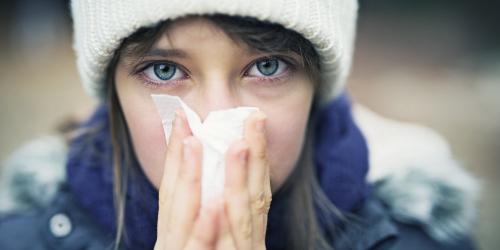If the battle against viruses (flu, AIDS, chikungunya ...) is far from over, the fight against bacteria seemed to be won.
Since the discovery of penicillin by the Scottish Alexander Fleming in 1928, many other antibiotics have been developed. Some of the supremacy of this biological arsenal, men then naively believed the problem definitely settled. However, it is not.
By dint of using antibiotics indiscriminately, and having allowed research to run out of steam, the situation has become critical: more and more germs are no longer responding to treatment. More than 70% of the bacteria responsible for infections in hospitals today resist at least one class of antibiotics. And a handful of them are now outright rebels against almost all existing antimicrobials.
Worse: many gonococci also become untreatable. These sexually transmitted microbes, vectors of gonorrhea, were previously contained with penicillin, sulfonamides, tetracyclines or macrolides. Now these antibiotics have all become inoperative in turn. Only ceftriaxone now comes to the end, at the price of increasingly high doses, since some strains are already starting to show signs of resistance (10 to 15%, according to the Institut Fournier, in Paris). Faced with this escalation, infectious diseases and learned societies around the world are multiplying the alarm signals. Because if our range of antibiotics could no longer control pathogenic bacteria, we would risk going back a century, when a simple injury could degenerate into a deadly infection. The subsequent operation of complex surgical procedures, such as prosthesis insertion or organ transplantation, would also become problematic. Fortunately, we are not there. But " the number of therapeutic impasses still increases seriously as and when the emergence and spread of multidrug-resistant bacteria ," said Professor François Bricaire, head of the infectious and tropical diseases department of La Pitié hospital -Salpêtrière, who chaired last May a scientific symposium in Paris on the subject.
In recent years, the appearance of stubborn bacteria are indeed no longer anecdotal in France. In 2010, germs resistant to penicillin, cephalosporins and carbapenems (last bulwark used in hospitals) were detected in the Paris region. Originally from the Indian subcontinent (Pakistan, India, Bangladesh), they carried a terrible gene: NDM1 that can jump from one bacterial species to another and thus transform a harmless microbe into a formidable " microbe mutant ". Enterobacteriaceae (Klebsiella pneumonae) resistant to almost all antibiotics were also reported during the summer of 2011 at JacquesCartier de Massy Hospital (91). The contamination came this time from a patient repatriated from Greece a month earlier. By the time doctors detected it, this invisible enemy had already spread to other patients, causing them severe respiratory infections. Since then, many other less publicized but equally worrying cases have occurred. " With the globalization of trade, we see more and more in our services, admits Professor Bricaire. Most come from emerging countries that suffer from overcrowding, lack of hygiene and where antibiotics are unfortunately over-the-counter, as in India and several parts of Africa, Central America and Latin America. A growing number also comes from the Mediterranean, Morocco, Greece and even Italy. "
Medical tourism, a risk factor
The recalcitrant strains often proliferate first in hospitals because of the concentration of patients, then they spread ceaselessly in the city before airing, ship, train or car around the world. " Medical and aesthetic tourism is therefore a real danger, as it participates massively in the spread of pathogenic bacteria, says Prof. Patrice Nordmann, head of the bacteriology, virology, parasitology department at Bicêtre hospital (94). ). The 400,000 to 500,000 foreigners who are hospitalized each year in India for hip replacement surgery or coronary surgery, for example, are potential vehicles for multidrug-resistant bacteria. Similarly, most French returning after hospitalization in Marrakech are carriers. "
In case of a health problem, it is better to be repatriated than to go to the hospital in a country where the alert is exceeded. " And when you have received care abroad, do not forget to mention it systematically to your doctor. Even if it is a comfort intervention , "advises Professor Nordmann. For although the situation is not yet catastrophic, microbial resistance is already causing casualties : around 25,000 deaths a year in Europe, including nearly 4,000 in France, are linked to infections of resistant bacteria, which have not been treated for lack of treatment. effective antibiotics, says the European Center for Disease Prevention and Control (ECDC).
But how did we get there? By using antibiotics irrationally, both in cases of bacterial aggression and in the face of a viral infection on which they are ineffective, we have signed their own death warrant. " Bacteria are living things that have a basic purpose: to survive," explains Professor Bricaire. " When attacked, they develop defenses to resist. They mutate genetically to become impervious to their attackers or produce enzymes capable of annihilating them. These mutations are transmitted from generation to generation and can sometimes be transmitted to neighboring bacteria. Result: Over the years, more and more resistant germs appear.
Current shortage of effective antibiotics
This phenomenon is certainly not new. Bacteria have been deploying this weapon for more than half a century. In 1947, streptomycin was no longer able to overcome all tubercular meningitis, a particular form of tuberculosis. But no one was alarmed beyond measure since new bactericides were, at the time, regularly put on the market. Between 1940 and 1970, over a hundred new antibiotics were developed. But things have changed a lot. The sale of these drugs being unprofitable, the majority of large laboratories have deserted this area of research to invest in more profitable treatments, such as antidiabetic or antihypertensive, for example. Hence the current shortage of effective antibiotics.
The abuse of antibiotics by humans is not the only cause. Livestock and poultry also absorb it to a large extent. Large quantities are indeed administered to animals for veterinary purposes, for therapeutic or preventive purposes. In industrial farms, they are often even blindly distributed to the whole herd, and not only to the sick animals. Worse: they have also been given a long time to stimulate their growth. Without really knowing why, the pigs, oxen and chickens that ingest these molecules in small doses grow faster than others, while absorbing less food. This practice, banned in Europe for ten years but still in force in many countries, including the United States, is a major contributor to the emergence of resistance. Especially that veterinary antibiotics belong to the same categories as those used in humans.
All is not lost, the riposte is running
Fortunately, consciences wake up. France has developed a plan to further reduce the use of veterinary antibiotics by a quarter by five years, whose tonnage has already fallen by more than 20% over the last decade. And the World Organization for Animal Health, the WHO equivalent for animals, will organize in 2013 an international conference in Paris on the subject from which it will surely release new global recommendations.
In the pharmaceutical labs, the response is on. Some new antibiotics are under development. The first should arrive on the market within two to three years. But that will not be enough to preserve one of the most extraordinary discoveries of medicine if we do not change our behavior. Starting with doctors who must stop prescribing everything and use diagnostic tests to detect the nature of an infection. If it is viral, as is the case of 80% of angina in adults for example, antibiotics are excluded. " Too few generalists use these tests," laments Professor Bricaire. As for the patients, they must also take responsibility and stop demanding antibiotics from their doctor at the slightest outbreak of fever. Do not pick up old tablets from your medicine cabinet either. They could do you more harm than good.
Monitor your consumption
In ten years, the consumption of antibiotics fell by 16% in France, thanks to the repeated information campaigns of the Health Insurance. But " France still remains well above the European average, " says Dominique Maraninchi, director general of the National Agency for Safety of Medicines and Health Products (ANSM), in a July 2012 report on the subject. About 130 million boxes are sold each year, for a daily dose of more than 28 per 1,000 inhabitants, much more than in the Netherlands (11.4), than in Germany (14.9) or in Great Britain. Brittany (17.3). However, efforts are already slackening, especially among women who ingest 57.3% of antibiotics while they represent "only" 52.3% of the population. Find the mistake...
Beware of food contaminations
In June 2011, a wave of deadly intoxication hit France and Germany. The culprit: an E. coli bacteria, suspected in Spanish cucumbers and finally detected in sprouted seeds from Egypt. Such food infections are not uncommon (more than 200 000 cases per year), but fortunately the majority are less dramatic and cause only digestive disorders. To reduce the risks, it is important to avoid breaking the cold chain (place the fresh produce as quickly as possible between 2 and 4 ° C), disinfect the fridge every month with bleach, never refreeze a thawed product. And, of course, clean his hands as well as the worktop and all the cooking utensils.
Betting on probiotics
Antibiotics wreak havoc on the intestinal flora by destroying "friendly" bacteria in our digestive tract along with pathogens. However, many recent scientific studies have demonstrated the importance of this flora. " It plays a major role in our health. Its disturbances are the cause of allergies, celiac diseases (intolerance to gluten), immune disorders or unexplained weight gain , "says Prof. Stanislav Dusko Ehrlich, microbiologist at the National Institute for Agricultural Research (INRA) . By restoring its balance using probiotics (yogurts or dietary supplements), the risks are slightly reduced. But for a real targeted action, it should be known which probiotics are effective against which antibiotics. Research is in progress.


